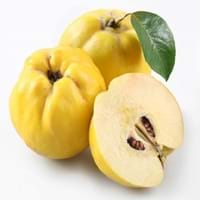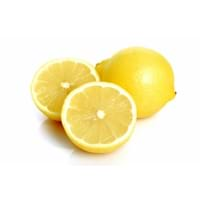Health Benefits
Cancer prevention, Cures gastro-intestinal troubles, Reduces nervous tension, Ulcer prevention
Arthritis treatment, Asthma treatment, Cancer prevention, Kidney stone treatment, Prevents constipation, Purging blood, Treatment of rheumatism
General Benefits
Anti oxidant properties, Anti-inflammatory properties, Boosts immune system, Controls blood pressure, Digestive aid, Eye care, Helps in weight loss, Improves blood circulation, Maintains healthy cholesterol level
Boosts immune system, Cures headache, Cures fever, Digestive aid, Flu treatment, Maintains healthy cholesterol level, Treatment of common cold
Skin Benefits
Anti-aging benefits, Reduces wrinkles
Heals sunburn, Reduces wrinkles, Skin rejuvenation, Treatment of acne, Treatment of skin diseases
Hair Benefits
Regulates hair growth
Prevents hair loss, Treatment of dandruff
Allergy Symptoms
NA
Eczema, Hives, Inflammation, Itching, Skin rash, Swelling
Side Effects
Allergic reaction
Diuretic effects, Heart burn, Tooth decay, Chances of sunburn
Best Time to Eat
As a snack in the late afternoon, Don't consume at night and before bed, Eat the fresh ones, avoid mixing with any other foods, don't eat after meal., Morning time (before lunch)
Along with meal, Best to drink lemon water on an empty stomach., Don't consume at night and before bed
Vitamin B5 (Pantothenic Acid)
Vitamin C (Ascorbic Acid)
Vitamin E (Tocopherole)
Not Available
Vitamin K (Phyllochinone)
Not Available
Lutein+Zeaxanthin
Not Available
Calories in Fresh Fruit with Peel
Not Available
Calories in Fresh Fruit without Peel
Not Available
Calories in Frozen Form
Not Available
Calories in Canned Form
Not Available
Type
Tree fruit
Citrus, Tree fruit
Season
Winter
All seasons
Varieties
Meech’s Prolific, Lusitanica, Champion and Vranja AGM
Avalon Lemon, Bears Lemon, Buddha's Hand, Bush Lemon, Citron, Eureka Lemon, Dorshapo Lemon, Finger Citron and Fino Citron
Color
Green, Yellow
Yellow, Yellowish-orange
Inside Color
White
Yellow
Texture
Crunchy
Succulent
Origin
Iran, South-West Asia, Turkey
China, India
Soil Type
Loam, Well-drained
Well-drained
Climatic Conditions
Warm
Hot, Sunny
Facts about
- Due to its strong & fruity aroma, brides consumed quince to ensure "perfumed lips".
- It is also called as ‘Pear of Cydonia’, being native to Caucasus and Iran.
- They call it as the ‘golden apple’ of Greek Mythology.
- Oil extracted from lemon peels is used for fingerboard of guitars.
- During Renaissance, ladies used lemons to redden their lips.
- Aroms of lemon decreases the level of stress hormones.
Top Producer
Turkey
China
Other Countries
Algeria, Argentina, Azerbaijan, China, Iran, Morocco, Serbia, Spain, Uzbekistan
Argentina, Brazil, India, Iran, Italy, Mexico, Spain, Turkey, United States of America
Top Importer
United States of America
United States of America
Top Exporter
Argentina
Mexico
Botanical Name
Cydonia oblonga
Citrus limon
Synonym
C. vulgaris
Not Available
Subkingdom
Tracheobionta
Tracheobionta
Division
Magnoliophyta
Magnoliophyta
Class
Magnoliopsida
Magnoliopsida
Species
C. oblonga
C. limon
Generic Group
Rose
Citrus fruit
Difference Between Quince and Lemon
We might think that Quince and Lemon are similar with respect to nutritional value and health benefits. But the nutrient content of both fruits is different. Quince and Lemon Facts such as their taste, shape, color, and size are also distinct. The difference between Quince and Lemon is explained here.
The amount of calories in 100 gm of fresh Quince and Lemon with peel is 57.00 kcal and Not Available and the amount of calories without peel is Not Available and 29.00 kcal respectively. Thus, Quince and Lemon belong to Low Calorie Fruits and Low Calorie Fruits category.These fruits might or might not differ with respect to their scientific classification. The order of Quince and Lemon is Rosales and Sapindales respectively. Quince belongs to Rosaceae family and Lemon belongs to Rutaceae family. Quince belongs to Cydonia genus of C. oblonga species and Lemon belongs to Citrus genus of C. limon species. Beings plants, both fruits belong to Plantae Kingdom.









